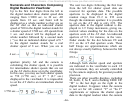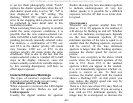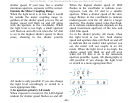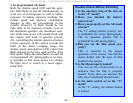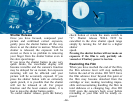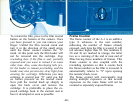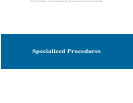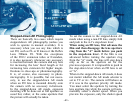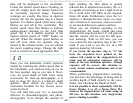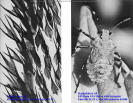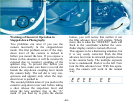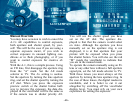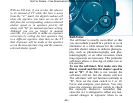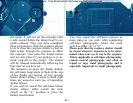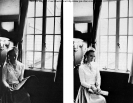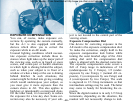
data will be displayed in the viewfinder.
Unless the shutter speed data is flashing on
and off, simply press the shutter button for
an accurately exposed image. Exposure
warnings are exactly like those in aperture
priority AE. Set the aperture ring to a larger
aperture if a shutter speed of the slow range
flashes on and off in the viewfinder. The
shutter speed value that flashes to indicate
underexposure depends on the ASA film
speed. Set it to a smaller aperture if the
highest shutter speed of “1000” flashes on
and off. When the shutter speed flashes on
and off even when the aperture ring is
turned to the extreme limits, you are outside
the meter coupling range. Change the light
level or switch to a more appropriate film.
Since you can determine correct exposure
simply by watching the shutter speed data in
the viewfinder, you need not keep an eye on
the lens aperture ring as you turn it. How-
ever, for good depth of field when using
accessories for close-up photography, it is
best to close the lens to a relatively small
aperture. More details are given in the
instruction booklets for the various acces-
sories involved.
You will find that your A-1 is unusually
effective in photomacrography and photo-
micrography. Even though the amount of
light reaching the film plane is greatly
reduced due to attached accessories, the A-1
is capable of metering as low a light level as
EV-2 (with ASA 100 film) in the stopped-
down AE mode. Furthermore, since the A-1
employs a through-the-lens meter, no expo-
sure correction is necessary when accessori-
es are inserted between camera and lens.
When you are finished operating in the
stopped-down AE mode, unfold and press
down on the stop-down lever. It will pop out
and the camera will be reset for full aper-
ture metering. With an FD lens, you can
now return the lens aperture ring to the “A”
mark if you wish to use the A-1 in a full
aperture metering AE mode.
If you return the aperture ring to “A
”
but
leave the stop-down lever pushed in, the
camera will remain in the stopped-down AE
mode and all subsequent exposures will be
made at the lens minimum aperture. Though
exposure will be correct, this situation se-
verely strains camera mechanisms and is not
recommended.
When performing stopped-down metering,
you also have the advantage of being able to
confirm depth of field directly in the view-
finder. See Checking the Depth of Field.
It is not possible to shoot sequentially with the
Power Winder A or A2 or Motor Drive MA
when in the stopped-down AE mode using an
FD lens. In this situation, only single-frame
power winding is possible.
Not For Resale
–
Free Download at http://www.joe
-
chan.com/manuals
–
62
–



